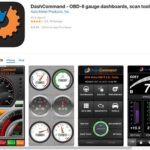The OBD2 (On-Board Diagnostics 2) data link connector in your Honda is a crucial gateway to understanding your vehicle’s health. Accessing this port allows you to retrieve diagnostic trouble codes (DTCs), monitor real-time data, and perform various troubleshooting tasks. This article provides a comprehensive guide to the Honda Obd2 Data Link Connector Pinout, enabling you to confidently connect to your car’s computer.
Understanding the Honda OBD2 Pinout
The Honda OBD2 connector, typically located under the dashboard on the driver’s side, uses a standardized 16-pin configuration. Each pin serves a specific purpose, transmitting vital information between your car’s electronic control unit (ECU) and a diagnostic scanner.
Here’s a detailed breakdown of the Honda OBD2 data link connector pinout:
| Pin | Signal | Description |
|---|---|---|
| 4 | CGND | Chassis Ground |
| 5 | SGND | Signal Ground |
| 6 | CAN High | J-2284 (Controller Area Network High) |
| 7 | K-LINE | ISO 9141-2 and ISO/DIS 14230-4 (K-Line Protocol) |
| 9 | SCS | Service Check System (Diagnostic Codes) |
| 12 | Programming Out | |
| 13/14 | Input/Output for VTM-4 & Immobilizer Control | |
| 14 | CAN Low | J-2284 (Controller Area Network Low) |
| 15 | L-LINE | ISO 9141-2 and ISO/DIS 14230-4 (L-Line Protocol) |
| 16 | +12V | Battery Power (Unswitched) |
Honda OBD2 Protocols
Different Honda models use various communication protocols, determining how the diagnostic scanner interacts with the ECU. Common protocols include:
- ISO 9141-2: Predominantly found in older Honda models (pre-2006).
- ISO 14230-4 (KWP2000): Often used in conjunction with ISO 9141-2.
- CAN (Controller Area Network): Commonly implemented in newer models (post-2008), offering faster communication speeds.
Refer to your vehicle’s owner’s manual or a reliable online database to determine the specific protocol used by your Honda.
Utilizing the Honda OBD2 Connector
Understanding the pinout allows you to utilize the connector for various purposes:
- Reading Diagnostic Trouble Codes (DTCs): Identify the source of warning lights or performance issues.
- Monitoring Live Data: Observe real-time sensor readings, such as engine RPM, coolant temperature, and oxygen sensor voltage.
- Performing Component Tests: Activate specific components like actuators and solenoids for diagnostic purposes.
- Programming and Coding: Modify certain vehicle settings (requires specialized equipment and software).
Conclusion
The Honda OBD2 data link connector pinout provides essential information for diagnosing and troubleshooting your vehicle. By understanding the function of each pin and the communication protocols involved, you can leverage the power of OBD2 diagnostics to maintain and repair your Honda effectively. Remember to consult your vehicle’s specific documentation for accurate protocol information and always use compatible diagnostic equipment.

